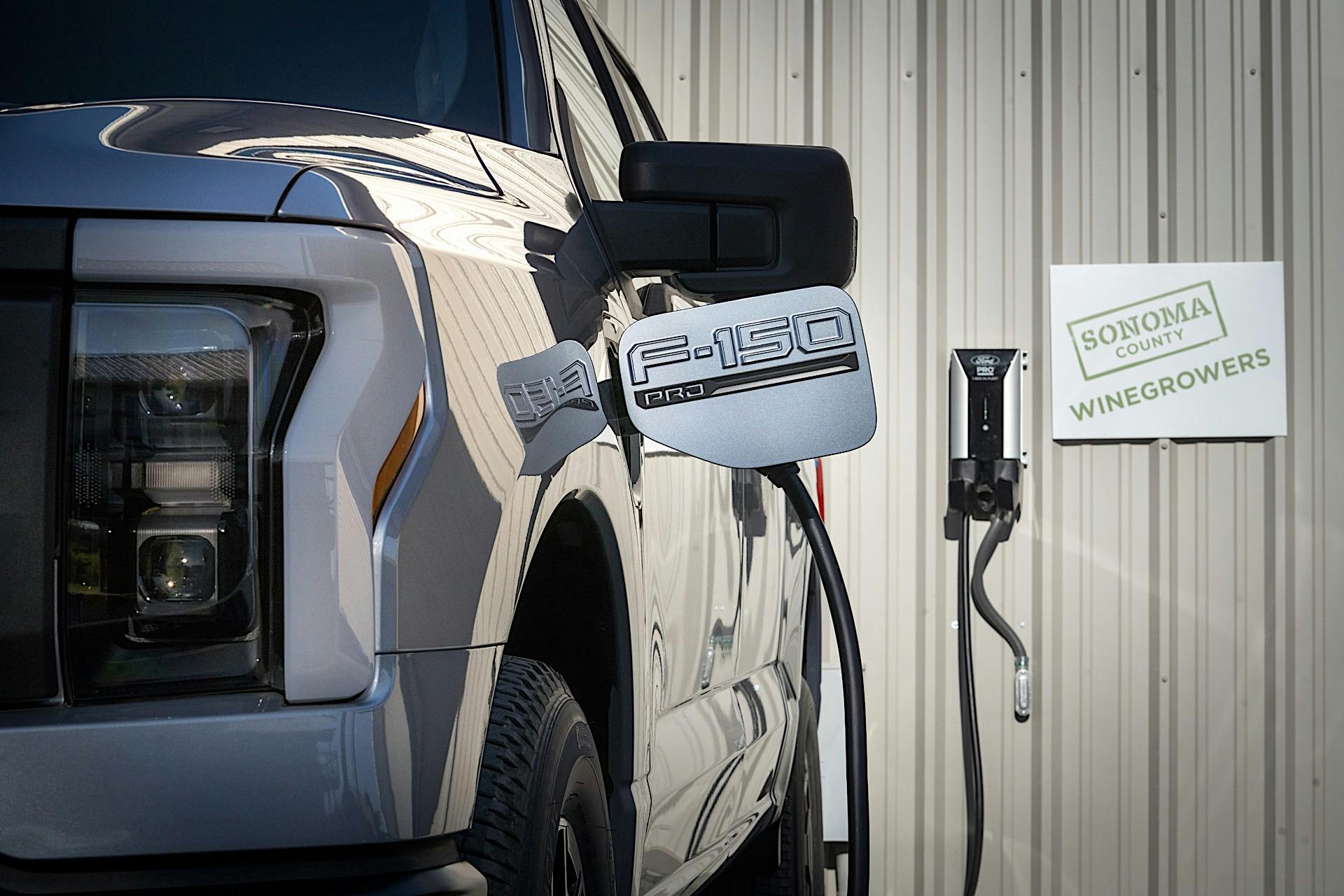Ford Pro, Ford’s commercial vehicle arm, has announced that it will collaborate with Wilbur-Ellis, and Pacific Gas and Electricity Company (PG&E). Both partnerships will add Ford battery-electric vehicles, Ford Pro charging solutions, charging software, and telematics systems to their respective fleets. A recent survey conducted by Ford Pro revealed that nearly three-quarters of businesses feel pressure to adopt BEVs and another 60 percent are planning to add them within the next two years. This latest announcement shows how Ford Pro is helping businesses of all sizes manage the transition.
Wilbur-Ellis is a global distribution leader in sustainable agriculture products and consulting. It plans to add the Ford F-150 Lightning Pro alongside charging solutions, software, and in-vehicle telematics to its fleet in Sonoma Count and Salinas Valley in California. This is part of stringent new sustainability goals that will see the company integrate 10 battery-electric trucks at first. It will learn to optimize energy solutions alongside one of its longtime customers, Dutton Ranch, which is also using Ford Pro vehicles and charging and software solutions as part of a pilot program with Sonoma County Winegrowers.
“We’re very excited to be early adopters of the new Ford F-150 Lightning Pro trucks and to deploy them in a commercial agricultural setting,” said John Buckley, President, and CEO of Wilbur-Ellis. “This collaboration is a win for everyone. Our customers will benefit from the information we gather about the impact these vehicles could have in their operations.” The same survey conducted by Ford Pro also revealed that 50 percent of commercial users see infrastructure as a top concern in the transition toward BEVs, making charging solutions even more critical in helping consumers reduce operating costs and optimizing charging times.
PG&E first announced its collaboration with Ford back in March and it has now expanded it to add charging hardware and software solutions to some of its F-150 Lightning Pro trucks in California. The company will test energy management improvements using Ford’s vehicle-to-grid technology as it integrates BEVs into the fleet. Together with Ford Pro’s charging stations and the truck’s batteries, PG&E aims to find ways to cut peak energy use at one of its depots. Jason Glickman, Executive Vice President of Engineering, Planning, and Strategy at PG&E states that we are currently in a transformative state and that there’s an opportunity to do better for customers, businesses, cities, and the planet. “PG&E’s collaboration with some of the world’s leading automakers will allow us to engage in the full ecosystem of potential with original equipment manufacturers, like Ford, to advance bidirectional EV charging technologies for a cleaner, safer and brighter future for all,” added Glickman.
Ford Pro’s new collaborations with Wilbur-Ellis and PG&E coincide with the Sonoma County Winegrowers pilot program. This is aimed at creating a blueprint on how industries and companies can best utilize BEVs for sustainable fleet operations using Ford vehicles and charging solutions. The Pilot is also aimed at integrating Ford Pro Telematics into farmers’ existing gas-powered fleets. Marissa Ledbetter of Vino Farms in Sonoma County noted that with the 50 Ford Pro vehicles on hand and the telematics service, they’ve already identified ways to improve their operations and save money. “Ford Pro Telematics has improved efficiency and productivity by helping us reduce vehicle downtime through complete visibility into maintenance needs, and we expect those benefits to grow as electric vehicles and charging stations become a more regular part of our operations,” said Ledbetter.
The Ford Pro pilot program in Sonoma County has gained a lot of interest from ranches across Sonoma County. As a result, the Sonoma County Winegrowers has offered Ford Pro Telematics to its 1,800 members for a year to help them improve their operational efficiency even on gas-powered and non-Ford vehicles.

